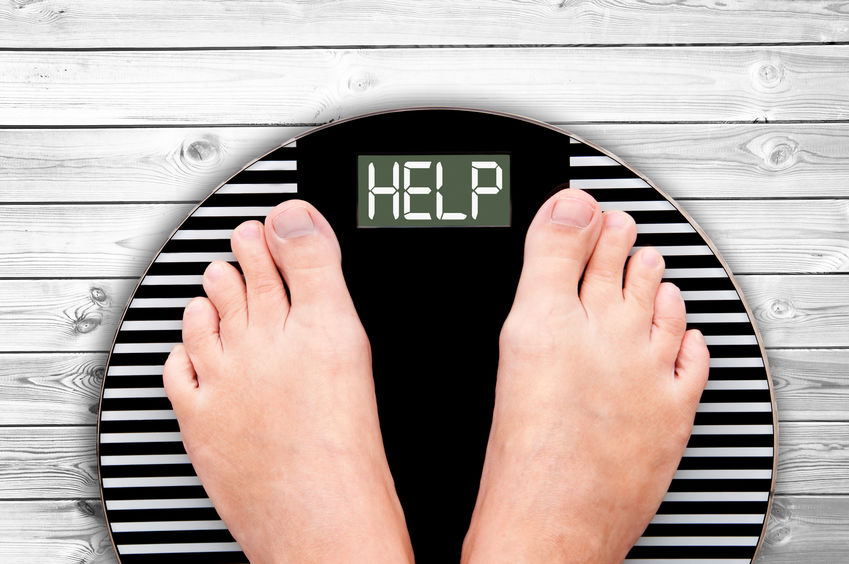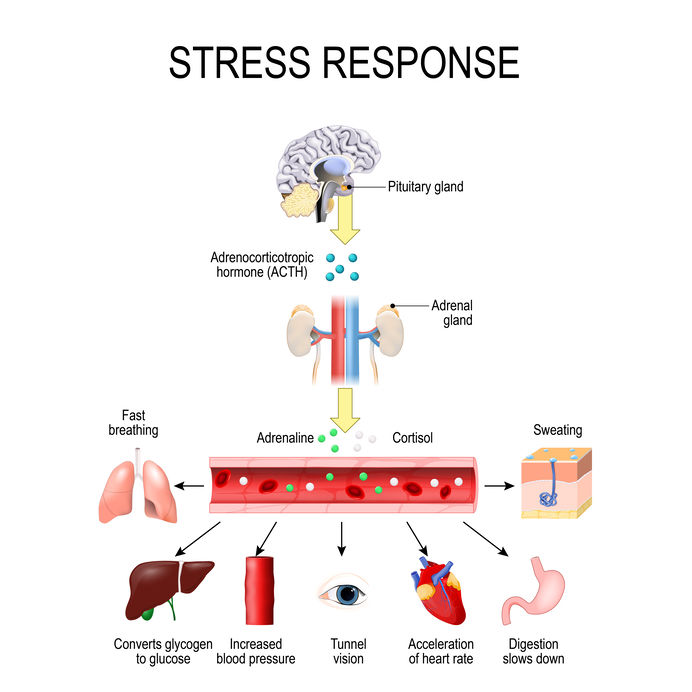If you have been following the keto diet for some time now, you may have noticed a few changes to your body. Your energy levels are soaring, the pants you bought last year are too big, and the scale shows some impressive figures. You have become a fat-burning machine and the hard work is paying off…that is until it all comes to a grinding halt. The weight seemed to melt away rapidly, but now it won’t budge. This very frustrating yet common occurrence is called the keto plateau or weight loss stall. It can be very discouraging especially after you have made such great progress. However, your keto journey is not over. There are a few ways to break through the weight loss plateau and get your ketones firing on all cylinders again.
What Is A Weight Loss Plateau?
Whether following a low carb or any other kind of diet, many individuals experience a stall in weight loss, where they continue to follow the same nutritional approach but haven’t seen any change over the past few months. For some, the keto plateau can occur as early as six months into the diet, while others may only experience this after a year or two.

Weight loss is not an easy or one-dimensional process. The body is a complex chassis that can adapt to most changes, which includes changes in energy intake and body mass. It is no secret that restricting calories is a sure-fire way to burn off fat and many may experience steady and consistent results during the first few months of the keto diet. However, as the body begins to adapt to the new figures on the measuring tape, its nutritional needs also start to change.
There are a few reasons why weight loss stalls happen on low carb diets:
Metabolic and Hormonal Adaptations
Ever wonder how our prehistoric ancestors survived when food was scarce? Well, it is thanks to the many built-in weight regulators we have inherited to prevent extreme reductions in weight. When we consume carbs, the body uses it for energy or stores it when there is a surplus. However, when food or carbs are not available, the brain triggers a variety of mechanisms to reduce energy expenditure in order to prevent more weight loss and increase our chances of survival. For example, to increase longevity, the body triggers the thyroid gland to release fewer hormones such as triiodothyronine (T3) and decrease its nonresting energy expenditure (NREE).
Muscle Mass
Muscle mass is not only important for getting that toned figure, but it also plays a crucial role in weight loss. Retaining a higher muscle mass helps to increase the RMR or resting metabolic rate. This is the rate at which the body burns calories while in a resting period. When the body is in the optimal state of ketosis, it starts to burn both fat and muscle mass. The ratio of fat to muscle mass you lose depends on a few factors like how much protein you eat, how much exercise you do, the intensity of your work out, and your stress levels. If you are losing weight but don’t follow a regular exercise routine, RMR levels start to drop, which may lead to an eventual stall in weight loss further into your keto journey.
General Lifestyle Habits
There are many other reasons why an individual may be hitting a keto plateau. Medications, the general state of one’s health, breastfeeding, pregnancy, smoking, and menopause could be influencing your weight loss efforts. Underlying problems with the thyroid or adrenal glands can also be affecting your metabolism and ability to burn off extra fat.
Have I Hit A True Keto Stall?

Most keto beginners will notice a sudden reduction in weight during the first week or two of dieting, however, after a few days, weight loss starts to slow down. Many assume this is a plateau, however, this is not a true weight loss stall. This just means your body has shed most of its water weight. When carbs are restricted, the body starts to use up all of its glycogen reserves (sugar stores) for energy. For every gram of glycogen, the body stores 3 to 4 grams of water. Once the glycogen is burned up for fuel, the extra 3 to 4 grams of water is excreted from the body.
It’s exciting to see the figures on the scale dropping in such a short time, but unfortunately, it is not fat we are losing in these early stages. If this is what you are experiencing right now, don’t worry, it is a good sign. Your body is starting to transition into ketosis and will start to shed the pounds at a more stable rate.
If you have been a keto dieter for quite some time, you may notice that you haven’t dropped a few pounds in a week or two, but that doesn’t necessarily mean you have hit a plateau. If you haven’t consistently lost weight every single week of your keto journey, it doesn’t mean you have stalled either.
Our total body weight varies from day to day. This is completely normal and is caused by natural fluctuations of water within the body. Comparing the figure on the scale today to what it showed in the previous week is not an accurate way to track true changes in weight loss.
Before allowing panic to set in, use these guidelines to determine if you have hit a true weight loss stall:

- Stepping on the scale shouldn’t be the only method you use to track weight loss. Due to the natural fluctuations in daily body weight, use a measuring tape to measure the circumference of your waist as well. Pay close attention to the way clothes sit on your body after a few weeks. Have they become a bit baggy? Or are they just as snug as the day you bought them? If your body composition has changed according to the measuring tape, it may not be a keto stall.
- If you are also following a strict exercise regime, you may notice that the figure on the scale has stayed the same, but the waistband on your jeans is not as tight as it used to be. This probably means that you have gained muscle, which is slowly replacing fat stores.
- Measure your weight over a long period of time rather than comparing it to the past few weeks. If the figures on the measuring tape haven’t budged in over three months, then it may mean you could have hit a plateau.
What Is Causing The Keto Plateau?
Once you have determined whether or not you have hit a true low carb plateau it’s time to take a closer look at your lifestyle and diet to identify what could be causing your weight loss efforts to come to a standstill.
Hidden Carbs

The reality is that carbs are lurking in almost every food you find at the supermarket. Manufacturers have even found a way to sneak in some sugars using alternative names that you wouldn’t think twice about. But it’s not just packaged foods that send ketone levels plummeting, fresh produce items and other keto-friendly options are just as guilty of pushing you close to your carb allowance for the day. It is only human to trust the low carb slogan embellished on the packaging, but if you are not being mindful about how much you are consuming, the carb count can quickly add up.
The same goes for fresh produce. There is no doubt that vegetables and fruits are valuable to any diet, but again, if you are not sticking to keto-approved portions, it can take a toll on your weight loss efforts. Take a look at nuts for example, they are relatively small in size, are high in fat, and beneficial to overall health, making it the perfect keto snack. However, overindulging in these scrumptious treats can push you close to the limit. One cup of almonds contains 9 grams of net carbs, which doesn’t sound like a lot in the grand scheme of things, but if you only have about 30 grams worth of carbs to play with in the day, it doesn’t leave much room for the rest of your meals.
Going Overboard With Protein
Unless you are following a high protein keto diet for performance reasons, excess protein could be the reason behind your keto stall. The low carb diet encourages followers to eat a moderate amount of protein, which should only make up 20% of your diet and for very good reasons.
Despite what some diet enthusiasts may say, the body can not function on ketones alone. Some cells in the body require glucose in order to function properly and since carbs are no longer the main source of glucose, the body must source it from somewhere else. This is where protein becomes the star of the show. The body breaks down protein into glucose during a metabolic process known as gluconeogenesis. The glucose made from protein is then used to supply the liver, erythrocytes, and nervous system with energy.
When there is not enough protein present in the diet, the body will start breaking down muscle tissues and other endogenous sources in order to get the glucose it needs to function. However, if there is an abundance of protein, it can cause blood glucose levels to spike. Since glucose is the body’s preferred choice of fuel, it may reset itself back to burning glucose for energy, which could hinder the state of ketosis and cause you to stall.
Too Many Fatty Treats

One of the greatest things about the keto diet is the abundance of recipes available at our fingertips. These range from wholesome dinners, energy-boosting snacks, and of course decadent desserts that will make your mouth water. Having these smart hacks and resources available helps keep dieters on track by encouraging them to eat healthy without having to sacrifice any of the taste.
However, the problem comes in when you eat one too many fat bombs or an extra serving of zucchini fries. Yes, they are keto-friendly, but they are still high in calories and can cause you to hit a keto plateau. The diet does encourage high-fat foods and does not really require you to count calories, though it is important to note that consuming too much keto “junk food” could affect your metabolism.
Ultimately, you want to burn off the fat that has already been stored in the body, not just the fat you have been eating, which is why many keto enthusiasts emphasize the importance of getting your macros right.
Activity Levels

Exercise is the cornerstone of any diet. As your body becomes more fat adapted, it needs some form of activity to keep burning the stored fat off. Being active and exercising helps to build muscle mass, which as we mentioned earlier, has an effect on the resting metabolic rate (RMR) and decreases the risk of muscle atrophy.
On the other hand, some studies suggest that intensified training can also cause a significant decrease in RMR. One study revealed that participating in aerobic exercise for over an hour at a time caused the RMR to decrease by a staggering 15%. Being sedentary or hitting the gym far too often you could be the reason you have hit a low carb plateau.
Stress
Stress is a common denominator in most health-related issues. We are all prone to stress at some point in our lives and unfortunately, no one is immune to the effects of it. But how does stress cause a weight-loss stall? It all boils down to hormones.

When we are stressed, our body signals the zona fasciculata, which is located in the adrenal cortex to release cortisol or what many refer to as the ‘fight or flight’ hormone. In small doses, cortisol is beneficial for protecting the body in stressful situations by triggering vital responses.
One of these responses a sudden burst of energy, which is caused by triggering the onset of gluconeogenesis in the liver. This is a great defense when you need the energy to escape a highly stressful situation, but when you are constantly stressed or anxious, the elevated cortisol levels cause an increase in blood glucose levels. According to research, there is a strong link between stress-induced cortisol levels and fat distribution in the abdominal area.
Poor Sleep
Not getting enough shut-eye could be the reason you have hit a keto plateau. There are two reasons for this.
The first one is that sleep deprivation or poor sleep can trigger stress, which as we learned in the section above, causes cortisol levels to skyrocket. Cortisol levels are naturally elevated in the morning and should drop closer to bedtime, which is when melatonin levels should start rising. However, insomnia or poor sleep causes the body to produce even more cortisol to keep the body alert and functioning properly.
The second reason we experience a weight-loss stall is that sleep deprivation causes ghrelin levels to increase. Ghrelin, otherwise known as the hunger hormone, is responsible for stimulating the appetite, promoting fat storage, and increasing food intake.
5 Ways To Break A Keto Plateau
Now that we have identified a few reasons you may be hitting a low carb stall, here are a few more ways to break through the plateau and get your fat-burning machine started again.
1. Supplement

Staying in a constant state of ketosis is the key to burning fat, and once you have become fat adapt half the battle has already been won. But this is easier said than done. We are living in a carbohydrate centered world and it is getting harder by the day to find food items that tick every box when it comes to macros and your nutritional needs. We slip up, we take that extra bite, we are only human after all and that’s ok. Thanks to science and a little thing called exogenous ketones, you can bust the low carb stall, even if you went a carb or two the limit.
Keto supplements are by no means a magic potion to burn off unrealistic amounts of fat, but rather a tool that helps amplify weight loss results and make the journey a bit easier for you.
A keto supplement can be used in the early stages of the diet until long after you have reached your ideal weight, but it is important to note that not all supplements are created equal. To reap the benefits of a keto product, invest in one that has the right algorithm… the right ingredients, dosage, and ethics. We recommend incorporating Approved Science Keto into your diet for these reasons:
- It is formulated with exogenous Beta-Hydroxybutyrate (BHB) ketones that have been bound to vital minerals like magnesium, calcium, sodium, and potassium. These ingredients help to induce a state of ketosis and maintain optimal blood ketone levels far along into the diet.
- The formula also contains MCT oil (medium-chain triglycerides). According to solid research, MCT oil has shown to increase satiety, curb hunger, increase ketone levels, and enhance exercise endurance.
- The 4 mineral salts in the formula help to replenish electrolyte levels and curb keto flu symptoms in the beginning stages of the diet. Approved Science Keto also helps to bridge the nutritional gap. Almost 50% of the US population is deficient in magnesium and it only gets worse. Less than 2% of the US population meet the recommended intake of potassium every day!
- BioPerine® (a patented black pepper extract) is the cherry on top. This extract helps to increase the bioavailability of all the ingredients we have mentioned, which ultimately boosts the supplement’s efficiency and potency.
2. Document Your Food
Keeping track of macros, calories, and how much water you drink can become tedious at times but it does reveal valuable information about your weight loss journey.
If you feel you have stalled on the keto diet, try starting a food journal to stay on top of your drinking and eating habits. One study revealed that participants who did not record their eating habits had a higher BMI (body mass index), more visceral fat, lower levels of vital nutrients, experienced higher levels of energy from protein, and showed a significant increase in fat mass.
By writing everything down you are able to see exactly where most of your calories are coming from. Then you’ll see what changes you can make to enhance weight loss.
Pro Tip: Invest in a funky journal and some colorful pens to get you excited about journaling your food habits or use an app to track while you are on the go.
3. Give Intermittent Fasting A Try
If you are struggling to keep your calorie intake to a minimum, try practicing intermittent fasting. Intermittent fasting involves going without food for a period of about 16 to 48 hours followed by an 8-hour window where eating is permitted.
Among other benefits such as fat loss, research shows that practicing intermittent fasting can help protect against muscle mass loss (as we mentioned above), decrease insulin levels, regulate hormones, and promote cellular repair. According to a study that has reviewed several intermittent fasting trials, participants who practiced intermittent fasting lost between 3 to 8% of their body weight. Participants also showed a 3 to 7% decrease in waist circumference over a period of 3 to 24 weeks.
There are various ways to practice intermittent fasting, but it is best to choose the one that fits into your caloric and activity needs.
4. Eat More Fiber
Boosting your fiber intake can help you beat the keto stall and get your weight loss back on track. Both soluble and insoluble fiber plays a crucial role in digestion and our survival. Technically fiber is a carbohydrate, however, the body is unable to digest it or break it down for energy. While both forms of fiber are beneficial, the weight loss spotlight shines brighter on soluble fiber, which is also known as viscous fiber.
Soluble fiber travels down the digestive tract at a much slower rate and as a result, keeps you feeling fuller for longer. Some studies also suggest that fiber may reduce the number of calories absorbed by the body from other meals. It is estimated that increasing fiber intake to as much as 36 grams per day may lead to the body absorbing 130 fewer calories from other foods.
Here are a few high fiber foods to stock up on:

- Chia seeds
- Zucchini
- Cruciferous vegetables
- Leafy Greens
- Flaxseed
- Blackberries
- Red cabbage
- Artichoke
- Pumpkin seeds
5. De-stress
This is not only important for overcoming a weight-loss stall but also for your overall health. Stress can take its toll on your immune system, blood pressure levels, sleeping patterns, and heart health. Take some time out of your day to decompress from the world around you. Try meditating or doing some light yoga. Even taking a short stroll outside in the fresh air will do wonders for decreasing your cortisol levels.
If you find you have trouble with anxiety and can’t seem to shake it, we recommend Anxietex to help increase serotonin levels, balance hormones and take the edge off by promoting a calm and peaceful state.
Our Final Word On The Keto Plateau
Experiencing a low carb stall can be very frustrating and demotivating. This is especially true when you have done your best to stick to a very restrictive diet like the keto diet. Don’t let this discourage you from continuing to live a healthy lifestyle. A plateau doesn’t have to last forever. You can easily break the stall by reevaluating your eating habits, getting active, and taking a minute to destress from everyday life. Fire up your ketones with Approved Science Keto and try to keep the keto junk food to a minimum. You’ll be back to burning off the pounds in no time!

